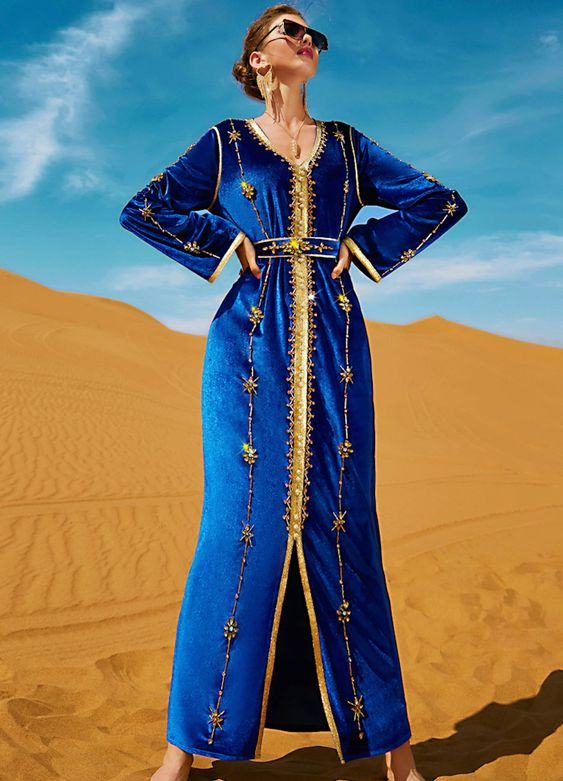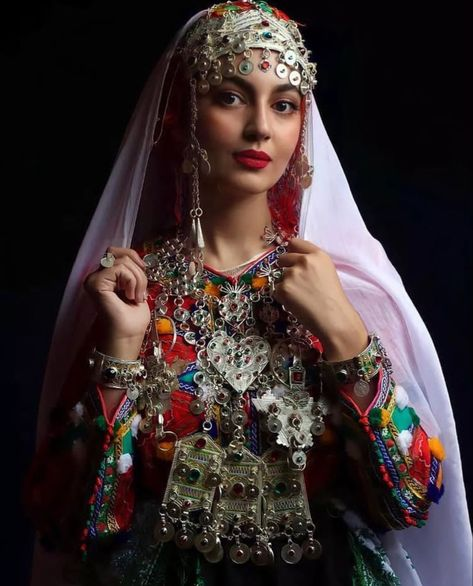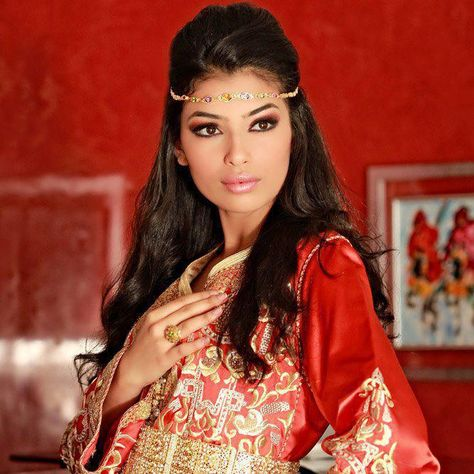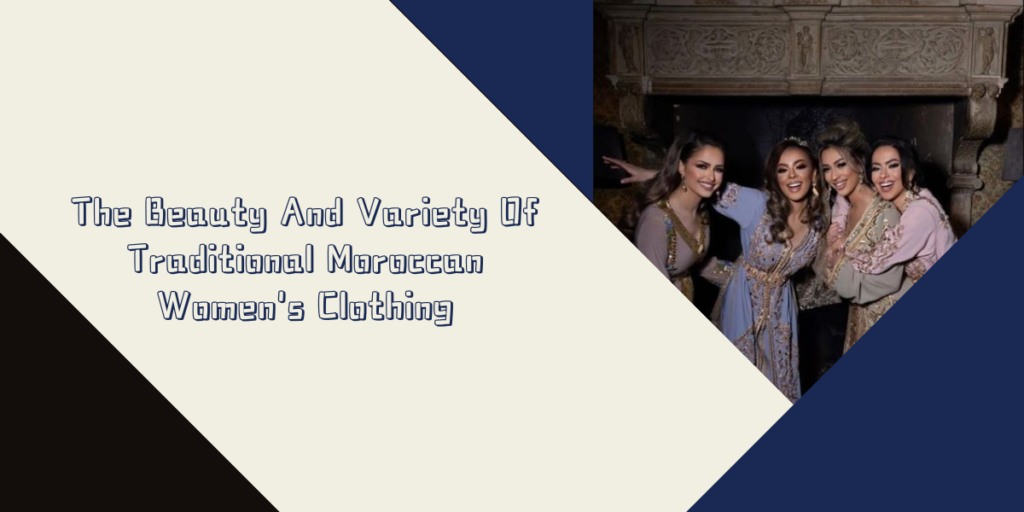Are you ready to embark on a fashion journey that celebrates the beauty and diversity of traditional Moroccan women’s clothing? At Janice’s Fashion Guide, we believe that dressing with confidence is all about embracing different cultures and styles. Janice is a renowned professional fashion blogger who is committed to empowering individuals through fashion and interested in traditional moroccan clothing. Join us as we dive into the rich heritage and exquisite craftsmanship of Moroccan women’s clothing. From the history behind these garments to the common elements that define their unique appeal, we’ll explore everything you need to know to make a fashion statement that is as culturally rich as it is stylish.
History Of Moroccan Women’s Clothing
Moroccan women’s clothing carries a captivating history that weaves together the intricate threads of the country’s cultural tapestry. Over the centuries, Morocco has been a melting pot of civilizations, blending the influences of Arab, Berber, and Andalusian cultures. Each culture has left an indelible mark on Moroccan fashion, contributing to its diverse and vibrant array of styles and garments.
The Arab influence introduced flowing robes and loose-fitting garments, reflecting the region’s desert climate and emphasizing modesty. Traditional Arab clothing, such as the caftan and djellaba, became integral parts of Moroccan women’s attire. These garments feature elegant draping, intricate embroidery, and rich fabrics, creating a sense of grace and femininity.
The Berber culture, indigenous to North Africa, brought its own distinctive style to Moroccan fashion. Berber women traditionally adorned themselves in colorful textiles and adorned their clothing with handcrafted jewelry. The use of vibrant colors, geometric patterns, and tribal motifs added a sense of energy and authenticity to their attire.
During the period of Andalusian influence, when Muslims and Jews fled Spain and settled in Morocco, fashion experienced an infusion of elegance and refinement. Spanish influences manifested in the form of intricate lacework, delicate silk fabrics, and ornate embellishments. These elements elevated Moroccan women’s clothing to new heights of sophistication, showcasing the country’s cultural fusion.
Throughout history, Moroccan women’s clothing has evolved as a reflection of societal changes and shifting fashion trends. Modern Moroccan fashion blends traditional elements with contemporary styles, incorporating Western influences and global fashion trends. Today, Moroccan women have a diverse range of choices, from traditional kaftans and djellabas to modern dresses and tailored suits, allowing them to express their individuality while celebrating their cultural heritage.

Common Elements Of Moroccan Women’s Clothing
When it comes to Moroccan women’s clothing, there are several common elements that define their aesthetic appeal. From the intricate embroidery to the use of vibrant colors and luxurious fabrics, these elements contribute to the unique charm of these garments. Let’s take a closer look at some of these defining features:
Intricate Embroidery
One of the hallmarks of traditional Moroccan women’s clothing is the intricate embroidery that adorns many garments. Skilled artisans meticulously create elaborate patterns using colorful threads, adding a touch of artistry and elegance to the clothing. From delicate floral motifs to geometric designs, the embroidery tells a story of the region’s cultural heritage.
Vibrant Colors
Moroccan women’s clothing is renowned for its vibrant and eye-catching colors. From bold reds and blues to vibrant yellows and greens, the color palette reflects the country’s lively spirit and rich cultural traditions. These vibrant hues not only make a bold fashion statement but also celebrate the vibrancy of Moroccan culture.
Luxurious Fabrics
Traditional Moroccan women’s clothing is often crafted using luxurious fabrics that exude elegance and sophistication. Silk, satin, and brocade are commonly used to create flowing and graceful garments. These fabrics not only provide comfort but also enhance the overall aesthetic appeal of the attire.

Traditional Styles Of Clothing
Moroccan women’s clothing encompasses a wide range of traditional styles, each with its own unique characteristics and significance. Let’s explore some of the most iconic and beloved styles:
Djellabah
The djellabah is a long, loose-fitting robe that is often worn as a traditional Moroccan garment. It typically features a hood and is made from lightweight fabrics such as cotton or linen. The djellabah is not only a comfortable and practical choice but also a symbol of Moroccan identity.
Caftans
Caftans are elegant, flowing garments that have been a part of Moroccan fashion for centuries. These loose-fitting dresses often feature ornate embellishments and intricate embroidery, making them perfect for special occasions and celebrations. Caftans are a symbol of grace and femininity in Moroccan culture.
Takchita
The takchita is a two-piece outfit consisting of an underdress and a decorative overcoat. This style of clothing is often reserved for formal events and weddings. Takchitas are known for their opulence, featuring rich fabrics, intricate beading, and exquisite embroidery. They truly embody the regal beauty of Moroccan fashion.
Accessories Of Moroccan Women’s Clothing
No outfit is complete without the perfect accessories, and Moroccan women’s clothing is no exception. Traditional Moroccan accessories add an extra layer of charm and cultural significance to the overall ensemble. Here are some noteworthy accessories that complement and enhance traditional Moroccan women’s clothing:
Handcrafted Jewelry
Moroccan women adorn themselves with stunning handcrafted jewelry that showcases their unique style and cultural heritage. Intricately designed silver necklaces, bracelets, and earrings are commonly worn, featuring filigree work, gemstones, and enamel detailing. These exquisite pieces of jewelry not only add a touch of glamour but also serve as symbols of wealth, status, and traditional craftsmanship.
Embroidered Belts
To accentuate the waist and add a pop of color, embroidered belts are a popular accessory in Moroccan women’s fashion. These belts feature vibrant threadwork and often incorporate decorative motifs, such as geometric patterns or floral designs. They are skillfully crafted using techniques passed down through generations, showcasing the artistry and attention to detail that Moroccan artisans are known for.
Handheld Clutch Bags
Completing the ensemble, Moroccan women often carry intricately designed handheld clutch bags that complement their attire. These bags are typically made from leather, fabric, or woven straw and feature beautiful embroidery, beading, or metal embellishments. They come in various shapes and sizes, allowing women to choose a style that suits their personal taste and the occasion.
Decorative Hair Accessories
Moroccan women pay special attention to their hair, and adorning it with decorative accessories is a common practice. Traditional hair accessories include ornate hairpins, hair combs, and headbands adorned with gems, beads, or colorful fabric. These accessories not only secure the hair but also add a touch of elegance and femininity to the overall look.
Embellished Scarves and Shawls
Scarves and shawls are essential accessories in Moroccan women’s fashion, often worn to cover the head, shoulders, or as a fashionable wrap. These accessories come in a variety of fabrics, including silk, chiffon, and embroidered textiles. They feature intricate patterns, vibrant colors, and delicate embellishments, allowing women to express their individual style and add a layer of sophistication to their outfit.
Henna Tattoos
While not a physical accessory, henna tattoos play a significant role in Moroccan culture and are considered an essential adornment for special occasions and celebrations. Moroccan women often decorate their hands and feet with intricate henna designs, symbolizing beauty, femininity, and auspiciousness. These temporary tattoos not only enhance the overall look but also represent cultural traditions and rituals.

Conclusion
In conclusion, Traditional Moroccan women’s clothing is enriched by a wide array of accessories that add charm, cultural significance, and individuality to the ensemble. From handcrafted jewelry to embroidered belts, each accessory tells a story of Moroccan heritage and craftsmanship. By incorporating these accessories into their outfits, women can elevate their style, celebrate their culture, and showcase their unique personality. So, without further ado, start your remarkable Moroccan women’s clothing adventure together!
FAQs
Where can I find authentic Moroccan accessories?
Authentic Moroccan accessories can be found in local markets, known as souks, where artisans and vendors offer a wide range of handcrafted jewelry, belts, bags, and other accessories. Major cities like Marrakech, Fes, and Casablanca are known for their vibrant souks and offer a diverse selection of traditional Moroccan accessories.
How do I style Moroccan accessories with modern outfits?
Moroccan accessories can be paired with modern outfits to create a unique and eclectic look. For example, a statement silver necklace can be worn with a simple white shirt and jeans to add a touch of Moroccan flair. Experiment with mixing traditional and contemporary pieces to create a fashion-forward ensemble that showcases your personal style.
Are there any specific cultural considerations when wearing Moroccan accessories?
When wearing Moroccan accessories, it’s important to respect the cultural significance and traditions associated with them. Moroccan culture places great value on modesty, so it’s advisable to consider modesty when selecting and styling your outfits. Additionally, it’s essential to appreciate the craftsmanship and artistry behind Moroccan accessories and understand their cultural significance. By wearing these accessories with reverence and embracing their cultural context, you can celebrate Moroccan heritage and showcase your admiration for the rich traditions they represent. Remember, fashion is not just about looking good—it’s also about appreciating and respecting different cultures.
